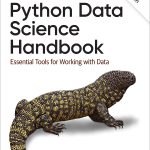
Geospatial data refers to information associated with a specific geographic location or geometry. It encompasses a wide range of data types, including points (such as addresses or GPS coordinates), lines (e.g., roads or rivers), and polygons (e.g., boundaries of countries or buildings). This type of data plays an important role in various applications, including mapping, location-based services, logistics, environmental monitoring, and urban planning.
In the context of MongoDB, a popular NoSQL database, geospatial data can be stored and queried efficiently using specialized data types and indexes. MongoDB supports two main geospatial data types: GeoJSON and Legacy Coordinate Pairs. While both formats are supported, the GeoJSON format is recommended as it adheres to industry standards and provides more flexibility.
The GeoJSON format represents geospatial data using JSON objects with specific properties and structures. It supports various geometry types, including:
- Represents a single location with latitude and longitude coordinates.
- Represents a sequence of points, forming a line.
- Represents a closed, non-self-intersecting line that defines a boundary.
- Represent collections of their respective geometry types.
By storing geospatial data in MongoDB, you can leverage the database’s powerful querying capabilities, indexing strategies, and geospatial operations. This allows you to perform tasks such as finding nearby locations, calculating distances, and performing spatial analysis efficiently.
Amazon eGift Card - Seasonal - (Instant Email or Text Delivery)
$50.00 (as of December 9, 2025 08:33 GMT +00:00 - More infoProduct prices and availability are accurate as of the date/time indicated and are subject to change. Any price and availability information displayed on [relevant Amazon Site(s), as applicable] at the time of purchase will apply to the purchase of this product.)Setting Up MongoDB and Pymongo
To work with geospatial data in MongoDB using Pymongo, the official Python driver for MongoDB, you need to set up both MongoDB and Pymongo on your system.
Setting up MongoDB:
- //www.mongodb.com/download-center/community” target=”_blank” rel=”noopener noreferrer”>MongoDB Download Center and download the appropriate version for your operating system.
- Follow the installation instructions specific to your platform.
- Once installed, start the MongoDB server by running the appropriate command (e.g.,
mongodon Unix-based systems or using the MongoDB service on Windows).
Setting up Pymongo:
Pymongo is a Python distribution containing tools for working with MongoDB, and can be installed using pip, Python’s package installer.
pip install pymongo
After installing Pymongo, you can import the necessary modules in your Python script:
from pymongo import MongoClient
To connect to a running MongoDB instance, create a MongoClient object:
client = MongoClient('mongodb://localhost:27017/')
db = client.your_database_name
In this example, we’re connecting to MongoDB running on the local machine (localhost) at the default port (27017). You can modify the connection string as needed if your MongoDB instance is running on a different host or port.
The db variable represents the database you want to work with. You can create or switch to a different database by modifying your_database_name.
Inserting Geospatial Data into MongoDB
To insert geospatial data into MongoDB using Pymongo, you can leverage the GeoJSON format. Here’s an example of how to insert a point and a polygon:
from pymongo import MongoClient
from bson.son import SON
# Connect to MongoDB
client = MongoClient('mongodb://localhost:27017/')
db = client.geodata
# Insert a point
point = {"type": "Point", "coordinates": [-73.856077, 40.848447]}
db.places.insert_one({"name": "Central Park", "location": point})
# Insert a polygon
polygon = {"type": "Polygon", "coordinates": [[
[-73.9597, 40.8003],
[-73.9732, 40.7976],
[-73.9755, 40.7909],
[-73.9692, 40.7865],
[-73.9597, 40.8003]
]]}
db.boroughs.insert_one({"name": "Brooklyn", "area": polygon})
In this example, we first import the necessary modules from Pymongo and bson (Binary JSON). We then connect to the MongoDB instance running on the local machine and create or switch to the ‘geodata’ database.
To insert a point, we define a GeoJSON object with the ‘Point’ type and provide the longitude and latitude coordinates as a list. We then create a document with a ‘name’ field and a ‘location’ field containing the GeoJSON point object, and insert it into the ‘places’ collection using insert_one().
To insert a polygon, we define a GeoJSON object with the ‘Polygon’ type and provide the coordinates as a list of lists. Each sublist represents a linear ring (a closed linestring) that defines the polygon’s shape. We then create a document with a ‘name’ field and an ‘area’ field containing the GeoJSON polygon object, and insert it into the ‘boroughs’ collection using insert_one().
MongoDB supports various other geospatial data types, such as MultiPoint, MultiLineString, and MultiPolygon, which can be inserted in a similar manner by adhering to the GeoJSON specifications.
Querying Geospatial Data with Pymongo
To query geospatial data in MongoDB using Pymongo, you can leverage MongoDB’s geospatial query operators. These operators allow you to perform various types of spatial queries, such as finding documents within a specified radius, intersecting geometries, or determining the nearest locations.
Here are some common geospatial query operations in Pymongo:
1. Finding Documents Within a Radius
You can use the $geoWithin operator with the $centerSphere operator to find documents within a specified radius of a given point. Here’s an example:
from pymongo import MongoClient
import pprint
client = MongoClient('mongodb://localhost:27017/')
db = client.geodata
# Find documents within a 5-kilometer radius of a point
point = [-73.9667, 40.78]
radius = 5 / 6378.1 # 5 kilometers, with Earth's radius in kilometers
docs = db.places.find({
"location": {
"$geoWithin": {
"$centerSphere": [point, radius]
}
}
})
for doc in docs:
pprint.pprint(doc)
In this example, we define a point and a radius (in radians, calculated using Earth’s radius). We then use the $geoWithin operator with $centerSphere to find documents in the ‘places’ collection whose ‘location’ field falls within the specified radius.
2. Finding Intersecting Geometries
You can use the $geoIntersects operator to find documents whose geometry intersects with a given geometry. Here’s an example of finding boroughs that intersect with a given polygon:
from pymongo import MongoClient
client = MongoClient('mongodb://localhost:27017/')
db = client.geodata
# Find boroughs that intersect with a given polygon
polygon = {
"type": "Polygon",
"coordinates": [[
[-74.04, 40.69],
[-74.04, 40.84],
[-73.91, 40.84],
[-73.91, 40.69],
[-74.04, 40.69]
]]
}
docs = db.boroughs.find({
"area": {
"$geoIntersects": {
"$geometry": polygon
}
}
})
for doc in docs:
print(doc['name'])
In this example, we define a polygon geometry and use the $geoIntersects operator to find documents in the ‘boroughs’ collection whose ‘area’ field intersects with the given polygon.
3. Finding the Nearest Locations
You can use the $geoNear operator to find the nearest locations to a given point and sort the results by distance. Here’s an example:
from pymongo import MongoClient
client = MongoClient('mongodb://localhost:27017/')
db = client.geodata
# Find the nearest locations to a point
point = [-73.9667, 40.78]
docs = db.places.find({
"location": {
"$nearSphere": {
"$geometry": {
"type": "Point",
"coordinates": point
}
}
}
}).limit(5)
for doc in docs:
print(f"{doc['name']}: {doc['location']['coordinates']}")
In this example, we define a point and use the $nearSphere operator (which considers Earth’s spherical shape) with $geoNear to find the nearest locations in the ‘places’ collection. We limit the results to the five nearest locations and print their names and coordinates.
Geospatial Indexing in MongoDB
To efficiently query and perform geospatial operations on the data in MongoDB, you need to create a geospatial index. Geospatial indexes are specialized indexes that support efficient querying of geospatial data, such as finding nearby locations, intersecting geometries, and calculating distances.
In MongoDB, you can create a geospatial index on a field that contains geospatial data, such as points, lines, or polygons. Here’s an example of creating a 2dsphere index on the ‘location’ field of the ‘places’ collection:
from pymongo import MongoClient
client = MongoClient('mongodb://localhost:27017/')
db = client.geodata
db.places.create_index([('location', '2dsphere')])
The create_index method takes a list of tuples, where each tuple specifies the field to index and the index type. In this case, we’re creating a 2dsphere index on the ‘location’ field, which is the recommended index type for geospatial data as it supports queries that take into account the Earth’s spherical shape.
Once you’ve created a geospatial index, MongoDB will automatically use it for efficient geospatial queries and operations. For example, when querying for documents within a specified radius or finding intersecting geometries, MongoDB will leverage the geospatial index to quickly locate the relevant documents.
It’s important to note that creating a geospatial index incurs an overhead during the indexing process and requires additional storage space. However, the performance benefits for geospatial queries can be significant, especially for large datasets.
You can also create compound indexes that include both geospatial and non-geospatial fields. This can be useful when you need to query based on multiple criteria, including geospatial data. Here’s an example of creating a compound index on the ‘location’ and ‘name’ fields:
db.places.create_index([('location', '2dsphere'), ('name', 1)])
In this case, the index will support efficient queries that involve both the ‘location’ field and the ‘name’ field.
Geospatial Aggregation with Pymongo
MongoDB’s aggregation framework provides powerful capabilities for data processing and analysis, including support for geospatial operations. With Pymongo, you can leverage the aggregation pipeline to perform geospatial aggregations on your data.
One common use case for geospatial aggregation is grouping data based on geographic regions or boundaries. Here’s an example of how to group points (e.g., locations of stores or events) by borough in New York City:
from pymongo import MongoClient
import pprint
client = MongoClient('mongodb://localhost:27017/')
db = client.geodata
# Define the borough boundaries as GeoJSON polygons
boroughs = [
{"name": "Manhattan", "area": {"type": "Polygon", "coordinates": [[...]]}},
{"name": "Brooklyn", "area": {"type": "Polygon", "coordinates": [[...]]}},
# ... (add more boroughs as needed)
]
# Insert the borough boundaries into a collection
db.boroughs.insert_many(boroughs)
# Aggregate points by borough
pipeline = [
{"$geoNear": {
"near": {"type": "Point", "coordinates": [-73.9667, 40.78]},
"distanceField": "distance",
"spherical": True
}},
{"$lookup": {
"from": "boroughs",
"localField": "location",
"foreignField": "area",
"as": "borough"
}},
{"$unwind": "$borough"},
{"$group": {
"_id": "$borough.name",
"points": {"$push": "$$ROOT"}
}}
]
results = db.places.aggregate(pipeline)
for result in results:
print(f"Borough: {result['_id']}")
pprint.pprint(result["points"])
In this example, we first define the borough boundaries as GeoJSON polygons and insert them into a ‘boroughs’ collection. Then, we create an aggregation pipeline that performs the following steps:
- Use the
$geoNearstage to find points near a specified location and include the distance from that location in the output documents. - Use the
$lookupstage to join the points with the borough boundaries based on the intersection of their geometries. - Use the
$unwindstage to deconstruct the array of borough documents for each point. - Use the
$groupstage to group the points by borough name and collect them into an array.
The result is a grouped collection of points, with each group representing a borough and containing the points that fall within its boundaries.







